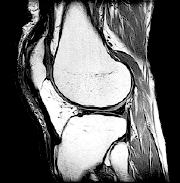You can find out what is causing your knee pain by having a thorough evaluation. You may see an orthopedist or a sports medicine healthcare provider. These providers treat bone, muscle, and joint problems. Your provider will work with you to find the cause of your knee pain and design a treatment plan for you.
Health history
Your health history gives your healthcare provider clues about the cause of your knee pain. It helps your healthcare provider set goals for your treatment. You’ll be asked about your pain and which activities make it worse. Your provider will also ask about past knee problems and activities you like to do.
Knee exam
A physical exam helps your healthcare provider locate your specific knee problem. Your healthcare provider will look at and move your knee to find signs of swelling or soreness. Then they will check to see how well your kneecap tracks. Other tests of knee function may also be done.
Tests
Diagnostic tests may help your healthcare provider learn more about your knee problem:
-
X-rays. These can show the alignment and position of your bones, including your kneecap. They can help find if a fracture is present.
-
CT scan. This is an X-ray imaging test that shows much more detail than a standard X-ray.
-
MRI. This detailed imaging test can show bone, cartilage, ligament, or muscle problems, without using X-rays.
-
Arthroscopy. This a surgical procedure that makes a small incision. It uses a tiny camera to let your healthcare provider see inside your knee joint, diagnose the problem, and possibly repair any damaged tissue. It may be done under general or regional anesthesia.


